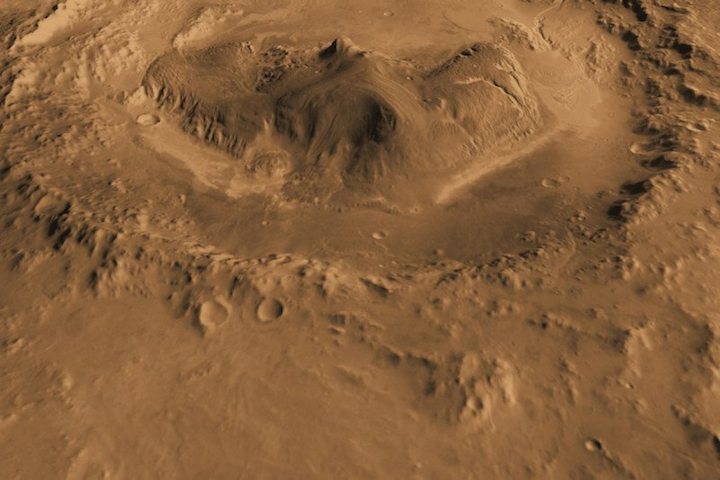3.10.2017

NASA/JPL-Caltech/ASU/UA
Better out than in. Explosive burps of methane flowing into young Mars’s atmosphere might have temporarily warmed the planet, allowing liquid water to persist even after Mars entered its dry period. Rovers and orbiters have found evidence that Mars had rivers 3 billion years ago, suggesting things occasionally warmed up enough for ice to melt and flow as water, sometimes for a million years.
The reason might have been giant bursts of methane, a potent greenhouse gas, according to Edwin Kite of the University of Chicago. These methane deposits, which may date to the birth of Mars, could even be responsible for temporary methane burps spotted by modern Mars spacecraft.
The methane bursts would have happened as Mars wobbled on its axis. Like Earth, Mars is tilted on its axis, but that tilt can change wildly over time because of relationships between its orbit and that of Jupiter. When Mars was extremely tilted, its ice deposits spent more time in direct sunlight, so they could have melted. This would free methane trapped in the ice crystals.
“It’s basically ice that you can set on fire. You can flick a lighter at it, and get a flame,” he says. “In your hand, it looks like ice, but at the pressures at Earth’s surface, it is unstable so it releases methane gas.”
Explosive eruptions
During periods of extreme Martian tilt, the stored methane would explosively erupt into the atmosphere, warming it enough to melt frozen lakes and start rivers flowing. Ultraviolet radiation from the sun would eventually break down the methane, but it could persist for up to a million years, says Kite.
The timing and duration of extreme-tilt events matches the duration and relative rarity of lake-forming climates in Mars’s history, his team found. Adding a 1 per cent dose of methane to a carbon dioxide-rich atmosphere, at the same pressure as Earth’s atmosphere, would raise temperatures by 6°C – enough to melt Martian ice.
This would only be possible if Mars also had a blanket of CO2 to keep it warm, too, Kite says. The methane would just be an added boost. But recent evidence suggests Mars may not have had as much CO2 as researchers thought.
Missing elements
Thomas Bristow of NASA’s Ames Research Center and his colleagues recently found a dearth of carbonate mineralsin rocks Curiosity has been studying inside Gale Crater.
“Having a thick CO2-rich atmosphere leads to some expectations about the kinds of rocks you would find deposited at that time. You would expect to see lots of carbonate minerals around, particularly in sedimentary rocks,” Bristow says, “but we don’t see them.”
Does this mean there was indeed low CO2? Or, that it was somehow sequestered from the lakebed Curiosity is now traversing and may be in rocks we haven’t studied yet? That’s an open question — but “if Tom’s right, I’m wrong”, Kite says. If there was no CO2, “there would be no net warming at all if you released methane into the atmosphere, because you need the CO2, too”.
The true test for methane may come from the ExoMars Trace Gas Orbiter, a European mission that arrived at Mars last fall. It will begin measuring the Martian atmosphere next spring, Kite says. It may be able to detect faint signals of methane at present, lending heft to the idea that methane burps could have warmed ancient Mars.
Quelle: NewScientist
